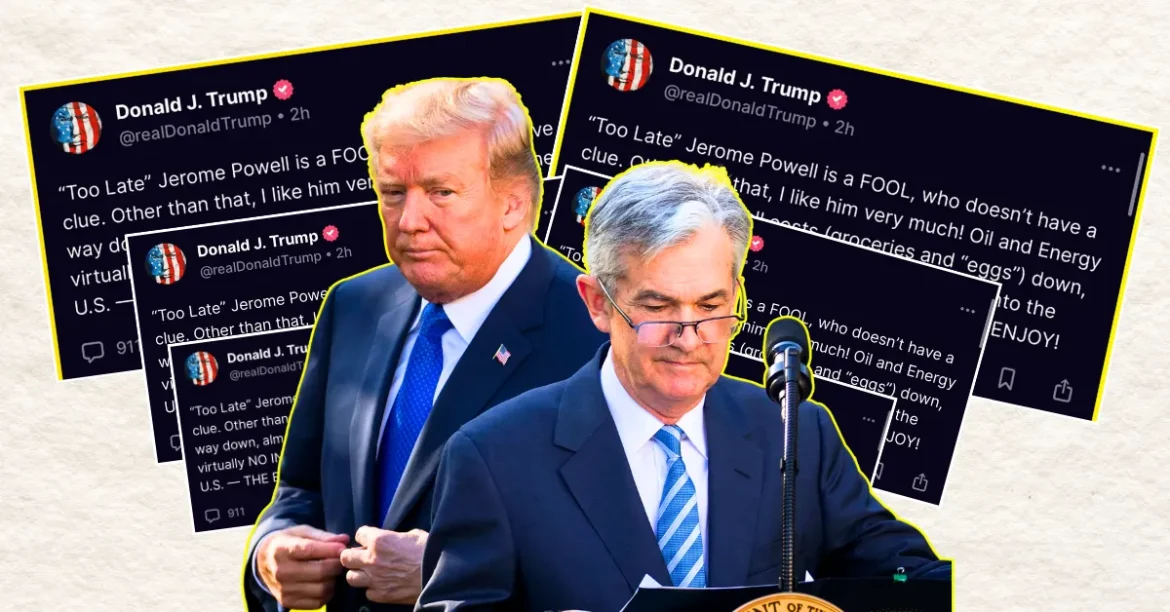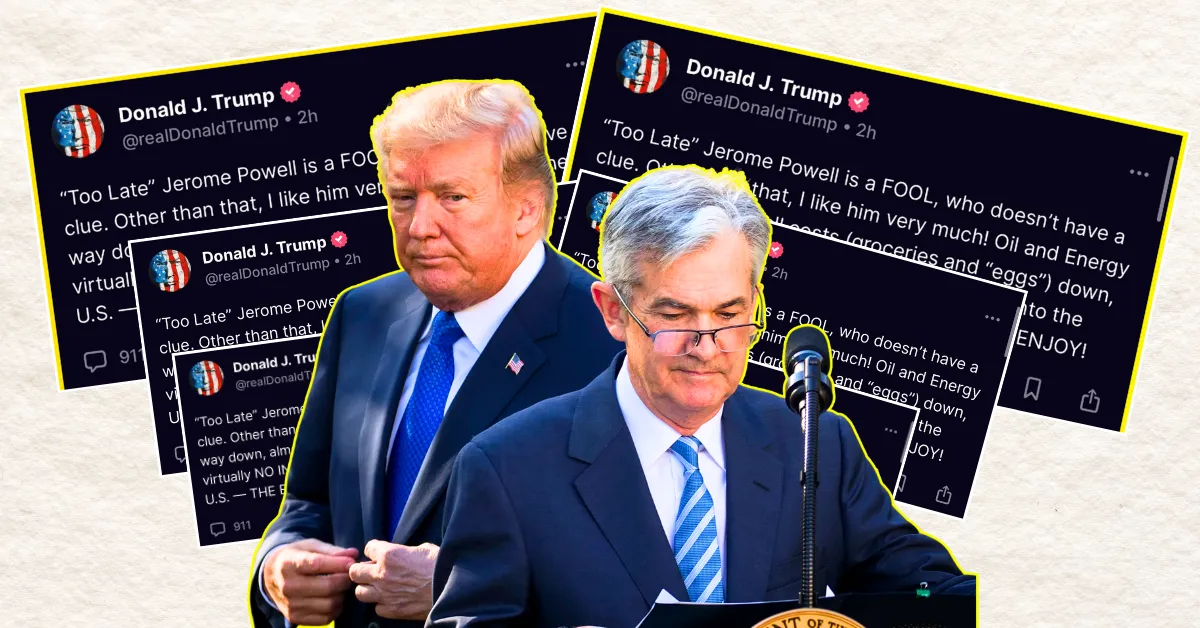The escalating tension between President Donald Trump and Federal Reserve Chair Jerome Powell has become a focal point in the intersection of politics and economics, raising critical questions about the independence of the U.S. central bank. Trump’s vocal criticism of Powell’s leadership, including calls for his resignation and threats of replacement, underscores a deeper disagreement over monetary policy in an economy that remains fragile despite recent growth. This conflict is not merely a political spectacle but a reflection of substantive differences in how to navigate inflation, employment, and economic stability.
The Role of the Federal Reserve and Jerome Powell’s Leadership
The Federal Reserve plays a crucial role in shaping the U.S. economy by controlling monetary policy, primarily through interest rate adjustments. Its dual mandate is to promote maximum employment and stable prices, a delicate balance that requires careful navigation of economic data and long-term trends. Jerome Powell, who was initially appointed by Trump in 2018, has maintained a cautious approach to interest rate adjustments, often resisting pressure to cut rates despite calls from the White House and some economists.
Powell’s tenure has been marked by contentious decisions, including holding interest rates steady even as inflation briefly surpassed the Fed’s 2% target. His approach reflects the Fed’s commitment to maintaining price stability and sustainable economic growth without succumbing to political influence. However, this stance has drawn sharp criticism from Trump, who argues that higher interest rates could stifle economic growth and job creation.
Trump’s Discontent and the Push for Leadership Change
President Trump has been vocal about his dissatisfaction with Powell’s policies, particularly the Fed’s reluctance to cut interest rates more aggressively. His administration has suggested that higher interest rates could undermine economic growth and job creation, especially in sectors like manufacturing and real estate. Reports indicate that Trump has identified potential replacements for Powell, signaling his readiness to push for a leadership change if necessary.
However, the legal and institutional barriers to removing a Fed Chair are significant. The Fed is designed to operate independently of political pressure to preserve market confidence and long-term economic stability. While the President has the authority to appoint the Fed Chair with Senate confirmation, removing a sitting Chair before the end of their term is a legally complex and unprecedented move. Historically, Fed Chairs have only been removed for cause, such as malfeasance or incapacity, rather than policy disagreements.
Market and Economic Implications of the Trump-Powell Conflict
The ongoing clash between Trump and Powell has had tangible effects on financial markets. The mere speculation of a leadership change at the Fed has contributed to market volatility, with the U.S. dollar weakening and Treasury yields declining amid expectations of an earlier-than-expected rate cut. Equity markets have also reacted to policy signals and political rhetoric, reflecting investor uncertainty about the future direction of monetary policy.
For the broader economy, the most significant risk lies in the potential erosion of the Fed’s independence. If the Fed were to yield to political pressure and shift policy prematurely, it could undermine long-term confidence in U.S. economic management. This could destabilize inflation expectations and investment climates, making it more difficult for businesses and consumers to plan for the future.
Legal and Institutional Constraints on Removing a Fed Chair
Despite Trump’s public criticism, legal experts emphasize that the President’s ability to remove a Fed Chair is limited. The Fed Chair serves a four-year term and can only be removed for cause, a standard that is typically interpreted narrowly. Powell himself has reportedly indicated his willingness to resist any attempt to force him out, highlighting the institutional protections that safeguard the Fed’s independence.
Attempts to dismiss a sitting Fed Chair without just cause would not only face legal challenges but could also provoke a constitutional crisis. The separation of powers and the independent function of critical institutions like the Fed are fundamental to the U.S. economic system. Any attempt to politicize the Fed’s leadership could have far-reaching consequences for market stability and public trust in economic governance.
The Path Forward: Stability Amid Uncertainty
As the conflict between Trump and Powell continues, the focus will likely shift to whether the President will wait for Powell’s term to end in early 2026 or intensify efforts to install his preferred candidates earlier. The debate raises broader questions about the balance between economic expertise and political control in the U.S. system.
Meanwhile, the broader economic context remains uncertain. Inflation has shown signs of cooling but remains above the Fed’s target, while employment data has been mixed. The Fed is navigating a delicate balance, where premature rate cuts could risk reigniting inflation, but delaying them may slow economic growth. Against this backdrop, the stability of Fed leadership is more than symbolic; it is essential for effective economic stewardship.
Conclusion: The Stakes of Fed Leadership in a Politicized Economy
The ongoing conflict between President Trump and Jerome Powell highlights the high stakes of monetary policy in a politically charged environment. Trump’s push to replace Powell reflects a broader trend of politicizing economic governance, but the Fed’s institutional protections and legal framework underscore its independence as a cornerstone of U.S. economic stability.
As markets react and policymakers assess evolving economic data, the coming months will be critical for U.S. monetary policy. Whether Powell remains at the helm or is replaced, the central challenge will be maintaining credibility and stability in an increasingly turbulent economic and political landscape. This episode serves as a reminder that monetary leadership is not just about managing economic indicators but also about navigating political pressures without compromising long-term economic health.





